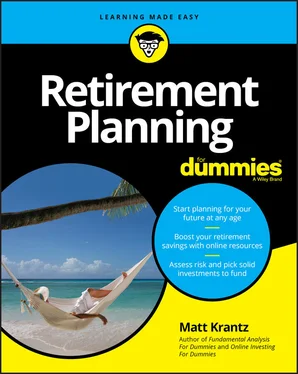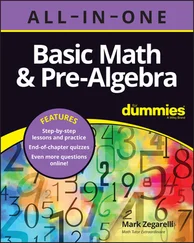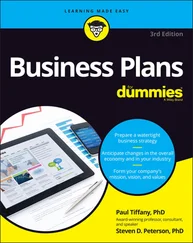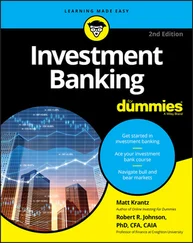Mvelopes: Like YNAB, Mvelopes is for the mobile generation. The system pulls in all your bank information (see a trend here?), and helps you see the categories consuming your cash. The system, which is supposed to mimic putting a set amount of money into envelopes, helps you stick to a budget.Let’s say you allow yourself $300 a month for eating out. Mvelopes will monitor your spending during the month and show you how much of your monthly dining out allowance you’ve used. That way, if you’re only halfway through the month and have used, say, 90 percent of your $300 allowance, you'll know you should skip the steak dinner your friends are planning (or talk them into pushing the event back a month).Mvelopes isn’t free. The Basic version costs $4 a month and provides the reports you need to calculate your run rate. You can get tips from a financial trainer every quarter for $19 a month or monthly for $59 a month. Again, paying money to save money is hard for me to justify.
Doing something with all this data
What good are all these technical tools? How does raw financial data help you plan for your retirement? Well, you're accounting for your money to see your financial needs and wants — your run rate.
Nearly all retirement-planning tools start with your run rate. You use this number to build retirement savings and investment plans. If you don’t know how much you’re spending now, building a plan is difficult.
Putting Your Spending in Context
Now that you know how much you’ve been spending, you’ll want to put this knowledge into context. Likely you’ll want to know the following:
How does my spending compare with other people’s?
Am I making proper use of my money?
How will my spending change in retirement?
Answering these questions require a bit a research, as described in this section.
A sure-fire route to unhappiness is comparing your money to that of your friends. “Keeping up with the Joneses” puts many people on a spending treadmill where they buy things to keep up the appearance of success. For that reason, I’m reluctant to show you how much typical Americans bring in and spend. On the other hand, a benchmark can help you understand your spending and start setting priorities.
Using government statistics as a guide
The U.S. Department of Labor’s Bureau of Labor Statistics (BLS) provides useful spending data. The data, which is typically released in September, compiles household spending for the previous 12 months. You can find the most up-to-date numbers on the BLS site at www.bls.gov/cex/tables.htm .
It’s amazing how much detail the BLS provides. Curious about how much Americans spend on booze, pork, wireless service, or stamps? The BLS knows.
You can look at the data in many ways, but Table 2-2is a good place to start. In the second col you see what the typical consumer unit, or household, spends. A typical consumer unit shown in the table looks like the following:
The head of the household is 51 years old.
The household contains 2.5 people.
The household has an average of 1.3 wage earners and 1.9 cars.
I realize no household has 2.5 people or 1.3 wage earners, or drives 1.9 cars. These are averages of the 130.8 million households that the BLS studies.
Before your eyes start to glaze over looking at all this data, consider the following highlights for the “All Adults” column:
Spending consumes 93 percent of after-tax income. This benchmark is important. If your income is 20 percent greater than the average, is your spending 20 percent greater? Is it more? If you’re spending more than 93 percent of after-tax income, find out why.
Housing costs burn a big hole in budgets. Shelter, as the BLS calls it, accounts for 19 percent of people’s annual spending. That amount includes only mortgage or rent. Then add utilities, which make up 6.5 percent of spending.
Little remains for savings. The typical American’s budget is stretched thin. If you subtract total spending from after-tax income, only $4,808 after-tax dollars remain.
TABLE 2-2Typical American Budget
| Item |
Average Annual Amount (% of Spending) |
|
All Adults |
65-Year-Olds |
| Income before taxes |
$76,335 |
$50,118 |
| After-tax income |
$65,623 |
$45,463 |
| Total spending |
$60,815 |
$50,178 |
| Food at home |
$4,445 (7.3%) |
$3,906 (7.8%) |
| Dining out |
$3,424 (5.6%) |
$2,607 (5.3%) |
| Shelter (includes rent or mortgage) |
$11,807 (19.4%) |
$9,213 (17.3%) |
| Utilities |
$3,956 (6.5%) |
$3,714 (7.4%) |
| Apparel |
$1,850 (3.0%) |
$1,134 (2.3%) |
| Transportation |
$9,735 (16.0%) |
$7,472 (14.9%) |
| Healthcare |
$4,924 (8.1%) |
$6,700 (13.4%) |
| Entertainment |
$3,379 (5.6%) |
$3,003 (6.0%) |
| Personal care |
$764 (1.3%) |
$681 (1.4%) |
| Education |
$1,505 (6.1%) |
$388 (0.8%) |
| Insurance |
$6,904 (11.4%) |
$3,185 (6.3) |
BLS Table 1300. Annual expenditure means, shares, standard errors, and coefficients of variation, Consumer Expenditure Survey, 3rd quarter 2017 through 2nd quarter 2018 ( www.bls.gov/cex/22018/midyear/age.pdf ).
Seeing how spending changes as you age
You might be wondering, “What does the spending of a typical American have to do with my retirement plan?” After all, if you’re like most people, you’ll work until you’re at least 65, and you assume that your spending habits will be different then.
Won't your need for money decrease over time? Let's fast-forward to your future and see how income and spending changes for households aged 65 or older. Check out the numbers in the “66-Year-Old” column in Table 2-2.
 If all these numbers are wearing you out, here’s a rule of thumb: For retirement income, you typically need at least 80 percent of your pre-tax income in your working years. If you’re curious how accurate this rule is, read on.
If all these numbers are wearing you out, here’s a rule of thumb: For retirement income, you typically need at least 80 percent of your pre-tax income in your working years. If you’re curious how accurate this rule is, read on.
So, how does life look different in retirement for most people? Here’s what happens to income and spending for a 66-year-old:
Income falls dramatically (more dramatically than it looks at first). The drop of after-tax income to $45,463 is more jarring than it seems. Keep in mind that average after-tax earnings peak at $86,635 when workers are aged 45 to 54. Seeing income fall to about half that is an adjustment.
The mix of income sources changes. Wages and salaries for people aged 65 and older drops to $17,129 a year. That’s down from $59,555 for all households. Meanwhile, Social Security and retirement savings pick up some — but not all — of the slack. People aged 65 and older bring in $25,425 a year from these retirement plans.
The 80 percent rule is good (and conservative). It turns out that our typical 65-plus-year-old’s spending totals 66 percent of the typical American’s pre-tax income. Remember, the average household brought in $76,335 in pre-tax income. If you plan on spending 80 percent of your income in retirement, you’ll be okay in most cases.
Housing costs fall (but not as much as you might think). Annual shelter costs still account for $16,723, or 18 percent of spending for the 65-plus set. You might expect this to be lower because most people at this age have paid off their mortgage. However, although 80 percent of those 65 and older are homeowners, 30 percent are still paying a mortgage. And 19 percent are paying rent. In other words, 49 percent of people at this age are either renting or paying a mortgage.
Читать дальше

 If all these numbers are wearing you out, here’s a rule of thumb: For retirement income, you typically need at least 80 percent of your pre-tax income in your working years. If you’re curious how accurate this rule is, read on.
If all these numbers are wearing you out, here’s a rule of thumb: For retirement income, you typically need at least 80 percent of your pre-tax income in your working years. If you’re curious how accurate this rule is, read on.










